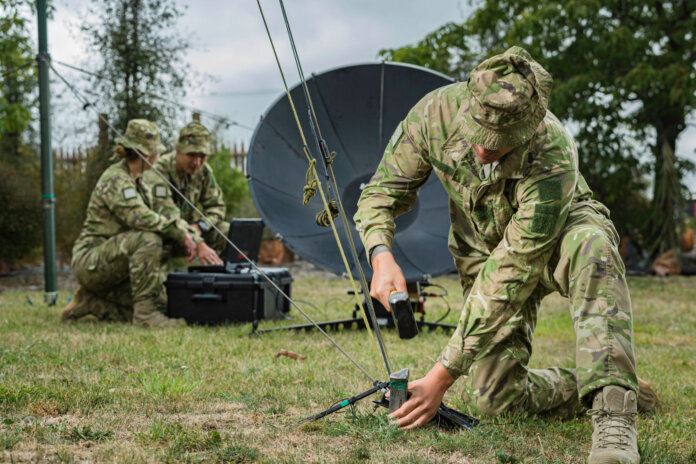
New Zealand is overhauling her army’s communications and command and control systems as part of an ambitious modernisation initiative.
The New Zealand Network Enabled Army (NZNEA) programme is moving ahead. This undertaking includes an overhaul of the force’s communications under the guise of a $23 million project. The overhaul will see the procurement of a Mobile Tactical Command System (MTCS), according to reports. New software and hardware are folded into the MTCS acquisition. Two tranches comprise the NZNEA programme with completion expected in 2026.
New Radios
Tranche-1 focuses on army command and control systems while tranche-2 concentrates on intelligence, surveillance and reconnaissance. The New Zealand Ministry of Defence (MOD) completed its tranche-1 request for proposals in 2017. In late 2018, L3Harris was chosen to provide the tactical radio hardware and software for MTCS. Alongside the radios, tranche-1 includes materiel for the command post environment chiefly physical infrastructure and accompanying computer systems, according to the MOD. The radios will work with a Battle Management System (BMS) and a universal bearer network. Both are also being supplied as part of tranche-1.
Nick Proctor, acting army programme director at the New Zealand MOD, told Armada that “(t)he MTCS will deliver network-capable digital combat radios and their peripherals, combined with a battle management system, to enable secure mobile networks in support of high-tempo, dispersed military operations”. From a communications perspective, Mr. Proctor said that tranche-1 will deliver “digital combat radios and supporting hardware and software to provide line-of-sight, and beyond-line-of-sight communications. This will ensure deployed land forces have enhanced situational awareness and effective decision-makings”.
Components of the MTCS include a tactical bearer network carrying Satellite Communications (SATCOM) and a high-capacity data network. Some of the tranche-1 capabilities have already been delivered, official MOD documents note. Systematic is providing its SitaWare BMS while Cubic’s 2.4-metre (eight-feet) antennas will carry strategic SATCOM. The army will be able to use the US/Australian Wideband Global SATCOM X-band (7.9 gigahertz/GHz to 8.4GHz uplink/7.25GHz to 7.75GHz downlink) and Ka-band (26.5GHz to 40GHz uplink/18GHz to 20GHz downlink) constellation. Gigasat is providing its FA-240 and FA-370 X-band and Ka-band SATCOM terminals as part of MTCS.
Systems
The New Zealand Army is already using several L3Harris radios, with additional systems to be supplied via the MTCS. These include RF-5800S High Frequency (HF: three megahertz/MHz to 30MHz) and Very High Frequency (VHF: 30MHz to 300MHz) backpack radios. The RF-5800S is augmented by the AN/PRC-117F VHF and Ultra High Frequency (UHF: 300MHz to three gigahertz) backpack transceiver. Joining the AN/PRC-117F is L3Harris’ AN/PRC-163 multi-channel handheld and AN/PRC-158 V/UHF radios. Both form part of MTCS tranche-1. Finally, HF communications are carried across L3Harris’ AN/PRC-160 transceivers. All these radios will equip all echelons of the army and have the SitaWare BMS. The exception is the AN/PRC-160 which will only be deployed from company level upwards.
Deliveries
Mr. Proctor said that deliveries of MTCS components to the New Zealand Army have commenced. Dismounted MTCS nodes have already achieved “interim operational release” with the army. These nodes are undergoing operational testing and evaluation, he continues. This progress marks a significant milestone for the army’s overhaul of its command and control. This will complement tranche-2 as it overhauls the force’s intelligence, surveillance and reconnaissance capabilities. New Zealand’s overhaul of her HF naval and coastguard communications come under the spotlight in our Coast to Coast article.
by Dr. Thomas Withington












